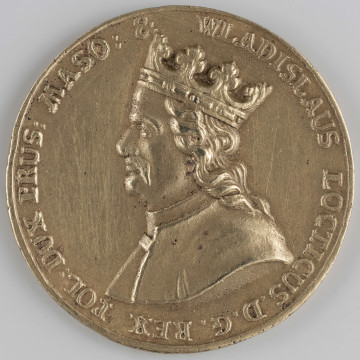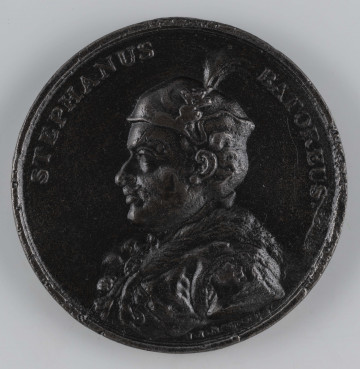
Władysław Łokietek - Kajetan Sołtyk's entourage
1790 — 1810
National Museum in Lublin
Part of the collection: Polish medallic art from the 16th to the 17th c.
The election of Stanisław August Poniatowski as King of Poland on 7 September 1764 and his coronation in St John's Collegiate Church on 25 November of that year were commemorated with silver tokens and gold and silver medals.
While the tokens were minted in the Toruń mint, the lack of a suitable artist in Poland made it necessary to produce the coronation medal abroad. The choice fell on the London mint and the Italian medallist Thomas Pingo (1714-1776), whose works made a great impression on the future king during his visit to the English mint in 1754. The King, as a seasoned collector and art connoisseur, participated in the design of this medal. Before the coronation, three hundred gold and one thousand five hundred silver medals were delivered from London to Warsaw, to be presented to more prominent personalities. The gold medal was also presented personally by the King to his teacher Gottfried Lengnich.
The portrait of the monarch was based on a drawing by Antoni Albertrandi (1732 or 1733-1795), from which the wax model was made by Lewis Pingo (1743-1830). It is surrounded by a Latin inscription: STANISLAVS AVGVSTVS D[ei] G[ratia] REX POLONIAE M[agnus] D[ux] LITH[uaniae] (Stanislaw August, by God's grace King of Poland, Grand Duke of Lithuania). At the intersection of the royal neck, the author placed his signature which reads: T[homas] PINGO F[ecit] (Thomas Pingo made). On the reverse of the medal the image of the crown is surrounded by the sentence: HANC IVSSIT FORTVNA MERRERI (Fortune made you deserve it). At the bottom is an inscription in three lines: EL[ectus] VN[animi] VOCE VII SEPT[embris]. CORON[atus] XXV NOV[embris]. MDCCLXIV (Elected by the unanimous vote of all on 7 September, crowned on 25 November 1764).
Ultimately, the medal failed to meet the King's expectations and attracted much criticism. Reservations were raised by the unsuccessful portrait of the monarch and the difficult-to-interpret Latin sentence on the reverse, which referred to the political ideology of ancient Rome, where the goddess Fortuna was the protector of the ruler and the state. Therefore, in 1766 the newly established Warsaw Mint was commissioned to produce another coronation medal, entrusting this task to Jan Filip Holzhaeusser (1741-1792), who was beginning his artistic career in Poland at that time.
Tomasz Markiewicz
Author / creator
Dimensions
cały obiekt: width: 33,5 mm
Object type
medal
Technique
stamp minting
Material
silver
Creation time / dating
Creation / finding place
Owner
The National Museum in Lublin
Identification number
Location / status

1790 — 1810
National Museum in Lublin

1792 — 1797
National Museum in Lublin

1792 — 1797
National Museum in Lublin
DISCOVER this TOPIC
Castle Museum in Łańcut
DISCOVER this PATH
Educational path